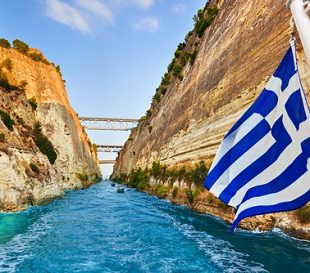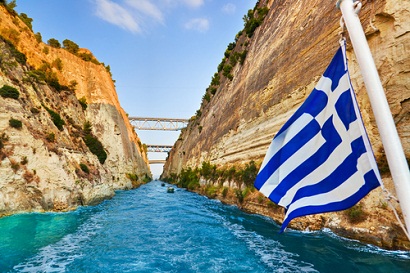
A brief history of the Corinth Canal in Greece
Greece has many famous sites, landmarks and vestiges and none more so than the Corinth Canal, which separates Peloponnese from mainland Greece, connecting the Gulf of Corinth with the Saronic Gulf.
Although the dream of having a canal that linked continental Greece with Peloponnese was a vision of Greeks more than 2000 years ago, Corinth Canal was not completed until the late 19th century.
Asides the canal that divides the large peninsula of Peloponnese with mainland Greece, there is a narrow strip of connecting land that is known as the “Isthmus”. At its narrowest point the “Isthmus” is just 4 miles wide, ironic when you consider that before the Corinth Canal was built, boats had to travel some 185 nautical miles, taking several days to complete the journey.
According to reports, it was Periander, the second tyrant of Corinth in the 7th century BC, son of the first tyrant, Cypselus, who first envisioned the Corinth Canal.
When upgrading Corinth port, Periander is said to have built a ramp across the Isthmus so that ships could have been dragged across to Peloponnese and avoid the lengthy sea route. This ramp became known as the ‘Diolkos’ and the money gained from it enabled Periander to abolish taxes in Corinth.
The Corinth Canal is almost four miles long, eight metres deep and, at its widest point, is almost 24.5 metres in width, and is still in use today. While impassable for larger vessels, the canal is used mostly by smaller ships and cruise ships. Organised cruises through the Greek islands and Istanbul take guests through the famous Corinth Canal, which remains one of such cruises highlights.



